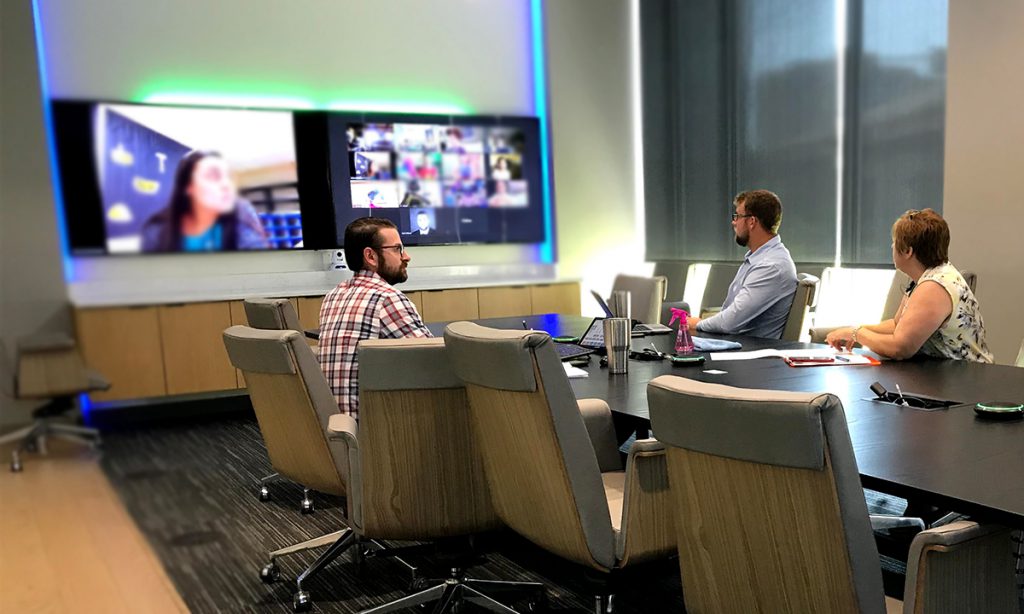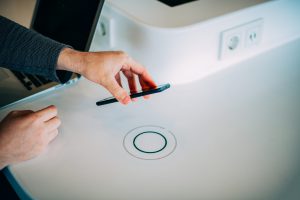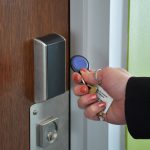Return to Corporate Meeting Spaces
While the corporate world learned many lessons throughout the COVID-19 pandemic, perhaps the most important was the need for adaptability. From creating the infrastructure and processes necessary for remote working to finding ways to limit the spread of germs in the office, flexibility became a key difference between success and failure.
With illnesses like COVID-19, areas where many people gather for extended periods of time are among the most likely to spread germs. As employees return to corporate meeting spaces, the IP Design Group team has identified ways technology can be integrated into these locations to help protect employees and guests alike.

Let Your Room Greet You
Setting the stage is key for making a great first impression and encouraging productivity. In today’s health-conscious world, it also means taking measures to stop the spread of contaminants.
- Use occupancy sensors or Bluetooth (BLE) beacons to initiate room startup when entering the room instead of using a communal control panel.
- Automate room startup based on the room scheduling system.
- Program a cleaning reminder into the room control panel upon system shutdown.
- Migrate the room’s communal touch panel to personal devices such as Crestron ONE. This requires users to download and configure an app, which does require additional configuration by the Owner.
Tip
Voice control is popular for home automation, but is not recommended for corporate spaces because it does not yet ensure reliable data security.

Hear the Difference
Volume issues and echo are two of the biggest complaints during remote work sessions. Give employees reliable communication tools to facilitate success.
- Use HD room audio beamforming technology such as Nureva Microphone Mist or Shure Dante Array.
- Provide the ability to use a personal device as a microphone (Crowd Mics) in larger venues and enjoy bonus polling and voting capabilities.
See Things from a Remote Perspective
Human beings read emotions from physical cues, making face-to-face interaction invaluable. Video is a powerful tool to connect remote members.
- Use auto framing/zooming video conferencing camera systems like Owl to revise camera views in a room to the person speaking while maintaining a 360-degree image of participants in the room. For smaller huddle spaces, Huddly and PanaCast feature a 150-degree camera using auto framing to the number of people in the room.
- Use IR tracking cameras to follow mobile presenters wearing an IR lanyard as they move within camera view around the room.
- Program camera presets in the communal control panel for positions around the table. This allows flexible camera views for remote participants, but also requires user input either through the control panel or personal devices.
Tip
Avoid using personal cameras on each individual’s device because competing open mics can create distracting audio loop and feedback.

Unplug
Touchless technology removes certain contact points in shared spaces, reducing the spread of illness.
Interested in how technology can help your employees safely return to the office?


